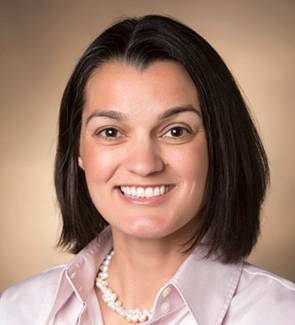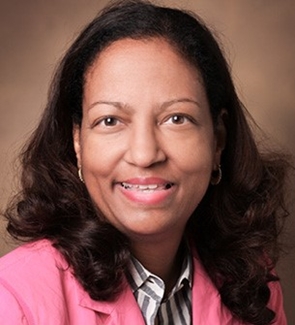Vanderbilt University Medical Center’s department of radiology health equity program addresses barriers to care.
- Radiologists at Vanderbilt University Medical Center have developed a dedicated health equity program.
- The program is focused on three core areas: increasing awareness of health equity principles, generating interest among trainees, and fostering health equity research.
- The team hopes to inspire action within and beyond radiology to ensure all patients receive high-quality care.
High-quality care is the ultimate goal of healthcare institutions. However, value-based care in one population does not necessarily look the same as it does in another population. The department of radiology at Vanderbilt University Medical Center (VUMC) believes that radiology is in a unique position to improve health equity — and is committed to ensuring that all patients have the opportunity to be as healthy as possible. In 2020, Vanderbilt radiologists established a health equity program within their department that is dedicated to reducing barriers to high-quality imaging care.
Imaging 3.0TM staff sat down with Lucy B. Spalluto, MD, MPH, vice chair of health equity at VUMC radiology, and Andrea Birch, MD, FACR, the department’s associate director of health equity, to discuss the program and why radiologists should be at the forefront in addressing health inequities.
  Lucy B. Spalluto, MD, MPH, vice chair of health equity at VUMC radiology, is leading the department’s efforts to address health disparities. Andrea Birch, MD, FACR, associate director of health equity at VUMC radiology, says that the community faces many barriers to care. |
Q: Why did Vanderbilt Radiology start its health equity program?
LS: Vanderbilt radiology’s dedicated, formal health equity efforts began in early 2020. We recognized the need to focus departmental efforts on addressing health disparities — specifically, we determined that providing the infra-structure and support for these efforts is essential to drive real change. Vanderbilt Radiology Health Equity’s over-arching goals are to strengthen and amplify health equity efforts through a combination of learning, research, and collaborative partnerships, ultimately driving systemic change within and beyond Vanderbilt to achieve health equity. To this end, our team works closely with VUMC’s Office of Health Equity, which is led by Consuelo H. Wilkins, MD, MSCI, VUMC’s vice president for health equity and a nationally recognized expert and leader in health equity.
Q: What are some obstacles to health equity in your community?
AB: Location is a big challenge. For instance, in our city, many of the communities of color don’t have a breast imaging center, and for those that do, it’s not accredited by the ACR as a Center of Excellence. If you are trying to get the best outcomes for these patients, they are already potentially disadvantaged because access to quality care is more difficult to obtain. Access is only one of the issues, though.
LS: In Nashville and more broadly the state of Tennessee, there is a lack of access to good jobs with appropriate pay that offer health insurance. Access to childcare can also be an obstacle, as can language and cultural barriers. It may be difficult to find a physician who looks like you and understands your specific needs. One of the ways we can start to address these obstacles is to understand the social determinants of health and how these obstacles impact different populations in different ways, as well as the types of resources different individuals require to be healthy.
Q: How can radiology begin to address these obstacles?
LS: Radiology can start by building stronger relationships with patients and the community. We need to help our patients understand why imaging is being performed and help them to trust the radiologists who are providing recommendations for follow-up care based on the results of the studies. We can do this by creating an environment for imaging that is inclusive of all patient needs. This can include offering information before exams and results after exams in the language and terminology that patients understand. It can also include understanding the different cultural needs of the community when it comes to imaging. There are many opportunities for radiology to make changes to improve equitable care.
Q: What were the first steps you took to start your health equity program?
LS: Our first steps were to obtain leadership support and establish the infrastructure within the department to support health equity efforts. Next, we developed an interdisciplinary team to drive our efforts and built collaborative relation-ships across departments within the medical center, as well as at institutions outside of the medical center. Cross-institutional, multidisciplinary, interprofessional efforts are necessary to drive systemic change to achieve health equity. We cannot stay in our radiology silo and in our reading rooms and expect to be able to make the necessary changes. We need to interact with our colleagues within the medical center and beyond. We must also build relationships with community members, including community healthcare centers and other organizations that help to provide care for these patients, as well as with patients themselves.
Q: Who are the leaders of the program, and how were they selected?
LS: Vanderbilt Radiology Health Equity is a collaborative effort driven by a diverse, interprofessional team. Initial discussions with our department chair, Reed A. Omary, MD, MS, FACR, focused on the need to advance health equity efforts locally, as well as nationally. We also discussed how efforts to achieve health equity require a team with a broad skillset. Important skills for team members and leadership in this field include experience in health services and health disparities research, experience working with the community, an understanding of health policy, and a commitment to developing learning materials for health professionals and patients. As our vice chair for health equity, I guide this team in our efforts to address disparities.
Q: Who else is involved in the program?
LS: We built a diverse team that has experience in providing various types of patient care across the organization — for example, breast cancer screening, lung cancer screening, and nuclear medicine. Our team includes radiologists, other radiology team members, nurse practitioners, trainees, and non-radiology team members from outside of the department. This diverse team provides a broad perspective across the field of radiology and beyond. We also believe it is important to have diversity of race, ethnicity, and gender representation on our team so that we can have a dynamic perspective in recognizing the needs of the community and developing potential solutions to meet the needs of the community. Dr. Omary and I developed an initial list of qualified individuals we believed would be interested in joining the team and then reached out to ask if they would like to join our health equity team efforts.
Q: What types of initiatives has the health equity team undertaken so far?
LS: We have focused our initial efforts on our three core functions: increasing awareness of health equity principles, generating interest among trainees, and fostering health equity research. Within the awareness category, we created a website for Vanderbilt Radiology Health Equity, where we post informational resources, departmental health equity publications, upcoming talks, and links to health equity resources. We also started an annual grand rounds health equity speaker series, funded by the department. And we worked to increase awareness of health equity through collaboration at the national level with the ACR and other societies, such as the American Society of Neuroradiology, through webinars and speaking series.
Regarding generating interest in health equity among our trainees, we focused our early efforts on education. In February of 2021, we piloted a two-week health equity mini-elective for our residents. Trainees from emergency medicine, internal medicine, and radiology participated in didactic learning and journal-club-style activities. The residents were also able to spend time at some of our local community health clinics as well as develop a focused quality improvement project related to addressing health disparities.
AB: On the research side, we have started to look at how we can improve our service line at the breast center to pro-vide care for underrepresented minorities. The mortality rate for Black Americans and other people of color is significantly higher than that of White patients — so much so that the Society of Breast Imaging has declared being Black as a risk factor for developing breast cancer. (Learn more about the guidelines at acr.org/ACR_SBI.) We are hosting virtual design-thinking sessions with multidisciplinary medical professionals, a diverse group of interprofessional community leaders, and patients to better understand what’s most important to our patients, question assumptions, and identify barriers so that scalable solutions can be tested and implemented. This is important because, in years past, research cohort studies didn’t necessarily reflect the population as a whole. Risk assessment models and guide-lines for how frequently screening, such as lung cancer or breast cancer screening, should be done didn’t necessarily include minority patients when they were created. Our goal is to better connect with patients from communities of color to deliver quality health care based on their needs.
We are also working on a project designed to meet the needs of our LGBTQ populations and help our providers better meet these needs. We hope to help gender and sexual minority patients better understand breast health and screening recommendations. We want to create an enhanced service line to improve the outcomes and experiences of this patient population when they come to the breast center or our other facilities.
Q: Why should radiologists care about health equity?
AB: In the past, radiology has not been at the forefront of health equity. That has usually been left to primary care medicine, such as internists and pediatricians, because they are traditionally more patient-facing and have been in a better position to see how the inequities impacted their patients’ lives and health outcomes. But as radiologists inter-act with patients more, the things that we are doing are impacting patients more than before. Health equity is starting to become something that radiologists are helping to address. This opportunity allows radiology to impact some of the policies and some of the changes and initiatives that need to occur to level the playing field. This is incredibly important work, and radiologists have a key role to play. At the end of the day, it is simply the right thing to do.
Q: Why should radiologists consider committing resources to addressing health equity issues?
LS: As Dr. Birch said, now is the time for radiology to claim their seat at the table for health equity. We need to show that radiology is committed to providing the best care possible to the diverse populations that we serve. This will take commitment from everyone — ranging from the individual level to the national policy level. Vanderbilt Radiology is committed to health equity, diversity, and inclusion. We are excited to be announcing soon how we plan to amplify these efforts through a sustained financial commitment into perpetuity. Our goal is to inspire action within and beyond the radiology community.
Creative Commons
Quality Care for All by American College of Radiology is licensed under a Creative Commons Attribution-NonCommercial-NoDerivatives 4.0 International License. Based on a work at www.acr.org/imaging 3. Permissions beyond the scope of this license may be available at www.acr.org/Legal.
Author
Meghan Edwards, freelance writer
Join the Discussion

#Imaging3 on Twitter
Call for Case Studies
